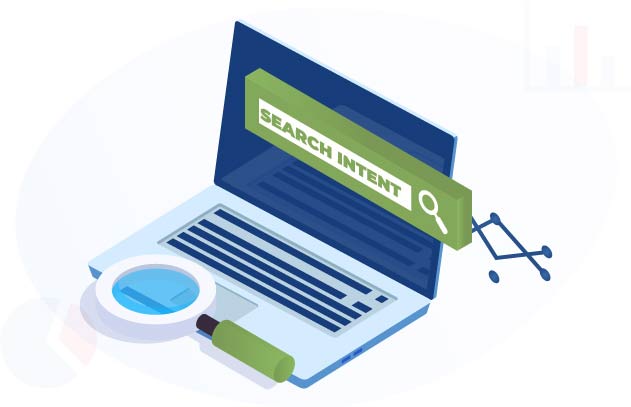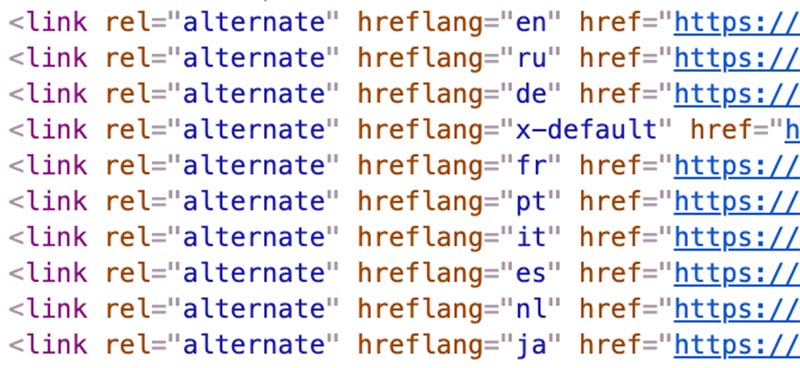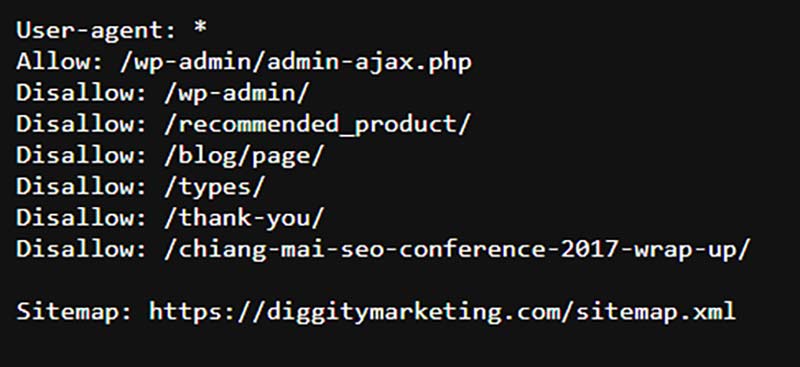
ChatGPT is a powerful AI-enabled SEO tool that helps businesses gain an edge in search engine optimization. This comprehensive guide will teach you how to use ChatGPT to its fullest potential, from identifying long-tail queries and uncovering LSI keywords, to creating content briefs and generating HTML codes for ALT text descriptions.
Uncover various benefits and strategies for optimizing your website’s content for SEO, learn how to generate structured data with ChatGPT, and discover the steps necessary for link building. With this guide, you can become an expert in mastering the art of ChatGPT for SEO.
Table Of Contents
Short Summary
ChatGPT is an AI-powered tool that enables users to engage in human-like conversations and other tasks, making it a popular choice for SEO.
It provides a range of benefits, such as long-tail query identification, LSI keyword generation, SERP analysis, search intent classification, content optimization, and link building.
ChatGPT can also generate HTML codes, ALT text, FAQ schema markup, multiple hreflang tags, and robots.txt rules for structured data.
If you’d like to learn more about how I use ChatGPT and other tools to create and maintain AI websites watch this video.
What Is ChatGPT?

ChatGPT is an advanced natural language processing tool powered by AI technology. It enables users to engage in human-like conversations and much more with the chatbot.
Additionally, it can provide assistance with tasks such as composing emails, essays, and code.
Microsoft’s investment of $10 billion into OpenAI after ChatGPT’s launch in November 2022 has made it a popular choice for those who want to use AI for conversational tasks.
ChatGPT takes spoken or written input, then processes and analyses it to offer a response.
It can be used to create more natural conversations with customers, as well as to increase the efficiency of company operations. ChatGPT is a powerful tool that allows users to quickly access the knowledge they need to make informed decisions.
By using ChatGPT, businesses can automate processes, save time and money, and reduce human error.
Benefits Of Using ChatGPT For SEO

ChatGPT offers numerous benefits for SEO, including generating content ideas, enhancing content quality, accelerating content creation, increasing website visibility, and optimizing user engagement.
By using ChatGPT for SEO, you can quickly generate SEO-friendly content and optimize your website for search engines.
ChatGPT can be used to find long-tail queries, get LSI keywords, classify keywords by search intent, brainstorm content topics, generate content outlines, create a content brief, generate page titles, generate meta descriptions, find and fix grammar issues, back content with data, find FAQs related to content, write strong and effective CTAs, and generate HTML codes.
ChatGPT can also be used for link building by helping you find popular websites in your niche, writing outreach emails, double down HARO link building, and creating descriptions for Pinterest pins.
Additionally, you can use ChatGPT to generate structured data such as FAQ schema markup, multiple hreflang tags, and robots.txt rules.
How To Use ChatGPT For SEO

Using the ChatGPT software allows users to identify long-tail queries, uncover LSI keywords, and classify keywords by search intent to optimize SEO efforts.
With ChatGPT, users have access to a wide range of SEO tools and features, allowing them to quickly perform tasks such as finding long-tail queries, generating LSI keywords, and classifying keywords by search intent.
Additionally, ChatGPT also takes into account human intervention and provides users with real-time SERP analysis, allowing them to make decisions based on the current search engine algorithms.
1. Find Long-Tail Queries
ChatGPT can be used to identify long-tail queries by entering a relevant topic along with additional modifiers such as the niche or market. Regular expressions are used to identify keyword ideas that are related to the topic and can be used to create search engine optimized content.
Additionally, ChatGPT can be utilized to generate a list of long-tail keywords and phrases by inputting common questions related to the topic. These long-tail keywords and phrases can then be used to target specific audiences and improve search rankings.
2. Get LSI Keywords
ChatGPT can be used to uncover Latent Semantic Indexing (LSI) keywords based on primary keywords. LSI keywords are words or phrases that are related to the primary keyword and can help improve search engine results page (SERP) rankings.
Additionally, LSI keywords can be identified through a search engine or with the aid of tools such as KeywordTool.io.
By incorporating LSI keywords into content, users can target a wider range of audiences and improve their content’s visibility in the SERP.
3. Classify Keywords By Search Intent
ChatGPT enables users to classify keywords by search intent by analysing the SERP and identifying the four main types of search intent categories on the first page: informational, navigational, commercial, and transactional.

By classifying keywords by search intent, users can ensure that their content is tailored to the right audience and relevant to their searches.
Additionally, classifying keywords by search intent allows users to optimize their content to target the right customers and improve their search engine rankings.
Optimize Content With ChatGPT

ChatGPT can be used to optimize content by providing accurate and comprehensive information on a variety of topics, as well as generating content tailored to target keywords and phrases, optimizing for featured snippets, and creating titles and meta descriptions for improved search engine optimization.
Additionally, ChatGPT can be employed to generate ideas and outlines, back content with data, and craft strong and effective calls-to-action.
Before we jump straight to the list, check this video to get a ChatGPT prompt that will help you to increase your website’s position on Google search results.
1. Brainstorm Content Topics
ChatGPT can be used to generate keyword ideas and brainstorm content topics quickly and effectively. It can generate ideas based on a given topic or theme, and can also be used to produce titles and outlines for blog posts, articles, and books.
Additionally, it is beneficial to focus on quantity first, then refine for quality, and to track the progress of the brainstorming process.
To generate successful content topics, marketers should use the latest trends and strategies for content creation, analyze existing content, consider target keywords, and ask ChatGPT to generate a list of ideas and topics.
2. Generate Content Outline
Generating content outlines with ChatGPT is a straightforward process. Simply input a prompt and ChatGPT will generate a rough draft for you to edit and refine.

Additionally, ChatGPT can be used to provide ideas and structure for blog posts, articles, and books, as well as create titles and outlines.
To generate successful content outline, marketers should consider their target keywords, analyze existing content, and use the latest trends and strategies for content creation.
Additionally, breaking down the content into different sections and categories and asking ChatGPT to write each section can be beneficial.
3. Create A Content Brief
Creating content briefs with ChatGPT requires a few steps. It is important to identify keywords and intent, outline the structure and format, add topics and subtopics to be covered, create an audience persona, and give an estimated word count.
Additionally, breaking down the content into different sections and categories and asking ChatGPT to write each section can be beneficial. Marketers should also use content marketing strategies to develop content that effectively engages the target audience.
4. Generate Page Titles By Content
Page titles are a critical element for SEO success, as they can influence click-through rates and search engine rankings. ChatGPT can be used to generate titles that accurately reflect the content of a page while also optimizing for target keywords and phrases.

Additionally, marketers should ensure that titles are attractive and unique, as this will help to grab the attention of readers and potentially increase search engine rankings.
It is also important to utilize title tags to give an indication of the page’s content and to avoid any unnecessary characters or punctuation.
5. Generate Meta Descriptions
Meta descriptions are snippets of text that appear below page titles in search engine results pages. They serve to provide a quick overview of the page’s content, which can influence click-through rates and search engine rankings.
ChatGPT can be used to generate accurate and succinct meta descriptions for SEO optimization.
Additionally, marketers should ensure that meta descriptions are attractive and unique, as this will help to grab the attention of readers and potentially increase search engine rankings.
It is also important to utilize title tags to give an indication of the page’s content and to avoid any unnecessary characters or punctuation.
6. Find & Fix Grammar Issues
ChatGPT is not a dedicated grammar-checking tool, though it can be employed to detect certain grammar errors. To utilize the chatbot for grammar-checking, simply enter the text of the article and request it to “check grammar.”

Additionally, ChatGPT can automatically correct any punctuation and grammar mistakes that may have been made. To ensure accuracy, it is important to double check the generated content for incorrect information or incorrect premises.
7. Back Your Content By Data
ChatGPT can be leveraged to support content with data by incorporating relevant data or statistics into generated content. Data-backed content can add credibility to a topic, as well as provide evidence to support claims that are made.
Additionally, it can add depth and detail to the content and make it more engaging for readers.
Marketers can use ChatGPT to quickly find accurate data from reliable sources, allowing them to incorporate content marketing strategies, such as creating data-driven blog posts or content that is optimized for specific keywords.
By leveraging data in their content, marketers can create content that is more authoritative and thus more likely to rank higher in search engine results.
8. Find FAQs Related To Content
ChatGPT can be used to find FAQs related to content by leveraging its comprehensive range of information from reliable sources. Once users submit a query, ChatGPT can provide tailored information and FAQs for topics that are relevant to the query.

Additionally, ChatGPT can generate content related to specific keywords and phrases to provide users with accurate, detailed, and up-to-date information.
When using ChatGPT to find FAQs related to content, it is important to ensure that the content is accurate and relevant, as well as optimized for search engine optimization. Furthermore, marketers should consider testing and optimizing the FAQs to ensure they are effective.
9. Write Strong & Effective CTAs
When utilizing ChatGPT to craft compelling and effective calls-to-action (CTAs), it is important to employ strong command verbs, create a sense of urgency, and make the CTA low risk.
Additionally, persuasive SEO content writing skills should be employed to make the CTA stand out with eye-catching colors.
To ensure that CTAs are effective, marketers should continually test and optimize them. This includes analyzing the performance of the CTA, as well as testing different variations to determine which ones are most effective.
Furthermore, marketers should consider utilizing ChatGPT for SEO prompts to ensure that the CTAs are tailored to the content and optimized for search engine optimization.
By leveraging the power of ChatGPT, marketers can craft effective and persuasive CTAs that drive conversions and increase engagement.
Check this video below to learn how Google treats content that is written or optimized by AI.
Generate HTML Codes With ChatGPT
ChatGPT is an AI-powered tool that can generate HTML codes for websites. It can generate code for CSS and JavaScript, as well as HTML, allowing developers to create fully functional websites quickly and easily.

Additionally, ChatGPT can be used to generate human-like text, making it ideal for SEO purposes.
1. Generate ALT Text By URL
ChatGPT is an AI-powered tool that can generate ALT text by URL, allowing developers to quickly and easily create websites with optimized ALT attributes.
ALT text is essential for SEO purposes, as it provides search engines with a better understanding of the content on a page.
With ChatGPT, developers can create human-like text with little effort, ensuring that the ALT text is natural and accurate.
The tool can generate ALT text for images, videos, and other content types, providing developers with a comprehensive solution for optimizing their websites for SEO.
2. Generate ALT Text By Description
ChatGPT is a powerful AI tool that can generate human-like text descriptions for images, videos, and other content types. This allows developers to easily create ALT text for websites, which is essential for search engine optimization (SEO).

By inputting a URL, ChatGPT can generate a meta description that is both unique and accurate. This allows developers to quickly and easily create ALT text that is both natural and optimized for SEO.
Additionally, ChatGPT can be used to optimize existing ALT text, ensuring that it is accurate and relevant to the content.
3. Win Featured Snippets Using NLP Content
Featured snippets are short snippets of text that appear at the top of Google search results. They are designed to provide the user with the most relevant information quickly and easily.
By winning featured snippets, a website can gain increased visibility and a higher ranking on Google.
NLP content is content generated using natural language processing algorithms, which can be used to create content that is optimized for SEO.
By creating NLP content that directly answers the user’s query, websites can increase their chances of winning featured snippets and improve their SEO.
4. Find Topical Gaps
ChatGPT can help identify topical gaps by analyzing existing content and finding areas where additional content and coverage is needed.

This can be extremely useful for SEO since it allows webmasters to identify topics to write about that are related to existing content, but have not yet been covered.
By filling these gaps, webmasters can help build up their website with fresh and relevant content, while also improving their SEO rankings.
5. Rephrase Content To Get Rid Of Plagiarism
Using ChatGPT for SEO can help webmasters detect and repurpose content that could be seen as plagiarized. By rephrasing content, it can be made unique and original, while still containing the same information.
This is a great way to avoid being penalized by search engines for having duplicate content and can help improve SEO rankings by providing unique content for search engine crawlers to index.
Additionally, ChatGPT can be used to create new content from existing content, allowing webmasters to expand their website with fresh content more quickly and easily.
Utilize ChatGPT for Link Building
ChatGPT is a very useful tool for link building. It uses a large learning model to generate SEO prompts which can be used to ask questions and get suggestions for link building.

With ChatGPT for SEO, marketers can easily find ranking opportunities, optimize their web page for search engine optimization, and use ChatGPT to generate content that will help increase their website’s ranking.
ChatGPT takes all the guesswork out of SEO and provides marketers with an easy way to get valuable insights into their SEO efforts.
1. Find Popular Websites In Your Niche
ChatGPT can be used to easily find websites that are popular in your niche by using keyword research. By researching and analyzing the target keywords, ChatGPT can provide you with insights into the most popular websites in your niche.
This is important because it allows you to find websites that can provide you with the most ranking opportunities and help you optimize your web page for search engine optimization.
2. Write Outreach Emails
Outreach emails are an important part of a successful content marketing strategy. With ChatGPT, marketers can easily generate outreach emails that are tailored to the website they are trying to target.

By using templates and automating the process, marketers can save time and energy while still creating personal and effective outreach emails.
3. Double Down HARO Link Building
Using HARO (Help A Reporter Out) is a great way to get backlinks from high-quality websites. With ChatGPT, marketers can easily generate HARO requests that are tailored to their niche and use them to reach out to reporters and get their content featured in articles.
This can help increase their website’s SEO ranking, as well as build relationships with reporters and media outlets.
4. Descriptions For Pinterest Pins
ChatGPT can generate descriptions for Pinterest pins which can help boost their SEO ranking. These descriptions can be tailored to target specific keywords and help marketers get more visibility on search engine result pages.

In addition, ChatGPT can also suggest other related keywords that marketers can use to further optimize their pins for SEO.
Generate Structured Data With ChatGPT
ChatGPT is an AI-powered tool that can generate structured data for SEO. It can crawl your website and generate structured data for your webpages and posts, helping you to optimize for search engines and ensuring that your content is properly indexed.
With ChatGPT, you can generate FAQ schema markup, multiple hreflang tags, and create robots.txt rules.
1. Generate FAQ Schema Markup
FAQ schema markup is a type of structured data that allows search engines to understand the questions and answers on your website.
Using ChatGPT, you can generate FAQ schema markup quickly and easily. ChatGPT will crawl your website and generate the necessary code for the FAQs, allowing search engines to display them in search results.
Explain what is FAQ Schema Markup: FAQ schema markup is a type of structured data that allows search engines to understand the questions and answers on your website.

This type of markup allows search engines to display the questions and answers from your website directly in the search results, making it easier for users to find the answers to their questions.
Describe the benefits of using FAQ schema markup: Using FAQ schema markup has several benefits. First, it makes it easier for search engines to understand your website’s content, helping to improve your rankings.
It also helps to increase your click-through rate, as users are more likely to click on a result that contains their question and answer. Finally, it helps to improve the overall user experience by providing quick answers to common questions.
Explain how to generate FAQ schema markup: Using ChatGPT, you can generate FAQ schema markup quickly and easily. ChatGPT will crawl your website and generate the necessary code for the FAQs, allowing search engines to display them in search results.
Provide examples of FAQ Schema Markup: An example of FAQ schema markup would be a question and answer about a product.
For example: “Q: What is the return policy for this product? A: All returns must be made within 30 days of purchase. This type of markup will allow search engines to display this answer directly in the search results.
2. Multiple Hreflang Tags
Hreflang tags are used to tell search engines which language and region a page is targeting. Using ChatGPT, you can generate multiple hreflang tags for your website, allowing search engines to properly index your content in the right language and region.

Explain what are hreflang tags: Hreflang tags are used to tell search engines which language and region a page is targeting. These tags are placed in the HTML code of a webpage and provide search engines with information about the language and region the page is targeting.
Describe the benefits of using hreflang tags: Using hreflang tags has several benefits. First, it ensures that search engines are properly indexing your content in the right language and region.
Secondly, it improves the user experience by making sure that users in different regions are seeing the correct version of your content. Finally, it helps to prevent duplicate content issues, as search engines will know which version of a page should be displayed in different regions.
Additionally, you can use it to identify any potential errors or missing pieces of code that could be causing your hreflang tags to not be displayed properly in search results.
Provide examples of hreflang tags: An example of hreflang tags would be code such as link rel=”alternate” hreflang=”en-US” href=”http://example.com/en-us/”>. This code tells search engines that the page at the specified URL is targeting the US English region.
3. Create robots.txt Rules
Robots.txt rules are used to tell search engines which parts of your website should not be crawled.

Using ChatGPT, you can generate robots.txt rules for your website, allowing search engines to properly index your content while avoiding any pages that should not be indexed.
Explain what robots are.Robots.txt rules are used to tell search engines which parts of your website should not be crawled. This code is placed in the robots.txt file of your website, and it can be used to block certain pages from being indexed by search engines.
Describe the benefits of using robots. Using robots.txt rules have several benefits. First, it allows you to control which parts of your website are being indexed by search engines. This can be useful if you don’t want certain pages to show up in search results.
Secondly, it helps to improve the crawling efficiency of search engines, as they won’t waste time crawling pages that you don’t want them to.
ChatGPT will crawl your website and generate the necessary code for the robots.txt rules, allowing search engines to properly index your content while avoiding any pages that should not be indexed.
Additionally, you can use it to identify any potential errors or missing pieces of code that could be causing your robots.txt rules to not be displayed properly.
Provide examples of robots.txt rules: An example of robots.txt rules would be code such as User-agent: * Disallow: /search. This code tells search engines not to crawl the “search” directory on your website.
Frequently Asked Questions
Does ChatGPT Help With SEO?
Yes, ChatGPT can help with SEO by bringing users more relevant results and increased website traffic. It can also help you create content quickly to drive up SEO rankings.

By leveraging the potential of AI-driven SEO insights and natural language processing, ChatGPT can be a great asset for boosting your SEO performance.
How Does ChatGPT Affect SEO?
ChatGPT is an innovative tool that helps optimize search engine rankings, making SEO easier and more effective.
It uses machine-learning algorithms to accurately interpret customer intent and create content tailored to them, resulting in improved clickthrough rates and increased visibility for your website.
Ultimately, ChatGPT allows for more efficient SEO so you can maximize your organic traffic.
Can I Use ChatGPT Content On My Website?
Yes, ChatGPT’s output can be used on your website as long as you follow the general best practices for online content. Remember to always add your own insights to content that is generated by ChatGPT for a more cohesive final product.
Start Using ChatGPT for Higher SERP Rankings!
ChatGPT is an incredibly powerful AI-powered tool that can be used for SEO since it offers an array of features to help marketers and developers optimize their websites.
This comprehensive guide highlighted the various ways it can be used to find long-tail queries, generate LSI keywords, classify keywords by search intent, as well as generate content outlines and titles, meta descriptions and FAQs for SEO purposes.
Additionally, ChatGPT also comes with tools to assist with link building, create HTML codes and structured data for SEO, and optimize CTAs in order to drive more conversions.
Overall, ChatGPT has the potential to revolutionize SEO efforts and boost visibility across a variety of platforms. From crafting persuasive CTAs and improving schema markup to identifying related keywords and generating backlinks – whatever your goal, ChatGPT can help you get there faster.
